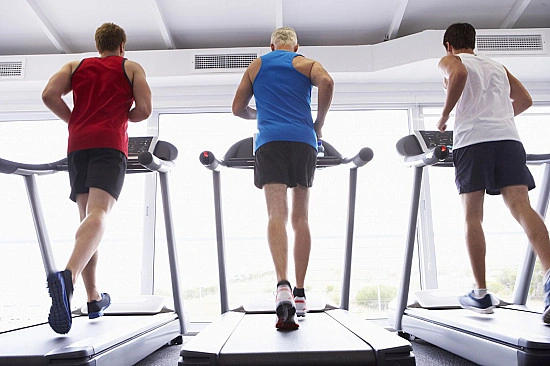Hey there! If you’ve ever walked into a meeting feeling a little foggy or tried to recall a name and came up empty, you’re not alone. The good news? A simple, regular workout routine can clear that mental haze faster than you think. Science shows that moving your body does more than tone muscles—it actually rewires your brain.
Stick with me for the next few minutes and I’ll break down exactly how exercise boosts your thinking, what types of movement give the biggest brain‑gain, and a realistic plan you can start today. No jargon, no fluff—just friendly, fact‑backed advice you can act on right now.
Why Exercise Helps
Increased Blood Flow & Oxygenation
When you get your heart pumping, blood surges through every vessel—including the ones feeding your brain. That extra flow delivers oxygen and nutrients that neurons love. A Harvard Health article notes that aerobic activity can increase cerebral blood flow by up to 20 %, which translates into sharper memory and faster processing.
Neuro‑Chemical Boost (BDNF, Dopamine, Serotonin)
Think of brain‑derived neurotrophic factor (BDNF) as “Miracle‑Gro” for brain cells. A meta‑analysis on Consensus.app found that just six minutes of vigorous effort can quintuple BDNF production, supporting the growth of new neurons and strengthening connections. At the same time, dopamine and serotonin rise, lifting mood and sharpening focus.
Neurogenesis & Structural Changes
Regular cardio doesn’t just keep your heart healthy; it adds volume to the hippocampus—the region that stores memories. Studies from CGS Fitness and Harvard show that older adults who maintain aerobic fitness have noticeably larger hippocampal volumes than sedentary peers.
Stress‑Reduction & Mood Elevation
Exercise lowers cortisol (the stress hormone) and releases endorphins, the body’s natural feel‑good chemicals. Lower stress means fewer “brain fog” moments and a more resilient memory system.
Best Brain‑Boosting Workouts
| Exercise Type | Cognitive Domain Most Impacted | Typical Session (min) | Intensity |
|---|---|---|---|
| Aerobic (walking, jogging, cycling) | Memory, processing speed | 30‑45 | Moderate‑vigorous |
| Resistance training | Executive function, attention | 20‑30 | Moderate |
| Open‑skill sports (badminton, martial arts) | Cognitive flexibility, reaction time | 45‑60 | Variable |
| Mind‑body (yoga, tai‑chi) | Stress resilience, working memory | 20‑30 | Light‑moderate |
Mixing Them for Maximum Effect
A recent study from the University of Texas at Dallas’ Center for Vital Longevity showed that combining cardio with short cognitive challenges (like counting backward while jogging) makes older brains light up like a 26‑year‑old’s during demanding tasks. Your weekly schedule could look something like this:
- 3 days of moderate cardio (brisk walk or bike)
- 2 days of strength work (dumbbells or resistance bands)
- 1 day of an open‑skill sport (pick something fun)
- 1 day of gentle yoga or stretching
Real‑World Success Stories
Case Study – Susan, 68, “From Forgetful to Fearless”
Susan started walking 30 minutes a day, five days a week. After six months, her Mini‑Mental State Exam rose from 24 to 28, and she reported feeling “more present” during family gatherings. Her story mirrors a larger trial where moderate‑intensity exercise reduced Alzheimer’s‑related decline by 30 %.
Quick‑Start Guide for Beginners
Ready to give it a try? Here’s a 5‑minute warm‑up you can do right in your living room:
- March in place (1 minute)
- Arm circles forward and backward (30 seconds each)
- Side‑step with a gentle knee lift (1 minute)
- Finish with a deep inhale‑exhale stretch (30 seconds)
Safety tip: Aim for a heart‑rate zone where you can talk but not sing. If you have any heart or joint concerns, check with your doctor before you start.
Common Pitfalls & How to Dodge Them
It’s tempting to think “the more, the better,” but over‑training can spike cortisol and actually impair memory. Also, don’t fall for the promise of “exercise mimic drugs.” Real‑world brain health comes from movement—not a pill. If you’re curious about why shortcuts don’t work, read our deep dive on exercise mimic drugs.
Balancing Benefits & Risks
Benefits Recap
- Improved memory and attention
- Faster information processing
- Reduced risk of Alzheimer’s and dementia
- Better mood, sleep, and stress management
Potential Risks (When Balance Is Ignored)
Joint strain, cardiovascular overload, or burnout can happen if you push too hard, too fast. Listening to your body and integrating rest days keeps the brain‑boosting hormones flowing without the downside.
Monitoring Progress Safely
Try a simple cognitive self‑test like the Trail Making Test every month. Pair that with a wearable that tracks your heart‑rate zones. Seeing concrete data can keep motivation high.
Putting It All Together: Your 6‑Month Brain‑Boost Plan
Month‑by‑Month Milestones
- Month 1: Build the habit—walk 20 minutes, 3 times a week.
- Month 2: Add a short strength circuit (bodyweight squats, push‑ups).
- Month 3: Introduce an open‑skill activity you enjoy (badminton, dancing).
- Month 4: Combine cardio with a mental game (count steps while reciting ABCs).
- Month 5: Increase intensity slightly—incorporate interval bursts.
- Month 6: Assess progress—repeat the memory test, notice any changes in daily focus.
Printable Checklist
Feel free to download a simple PDF checklist (link in the sidebar) to track your workouts, mood, and cognitive scores.
Conclusion
In a nutshell, moving your body is one of the smartest ways to supercharge your mind. Whether it’s a brisk walk, a set of dumbbells, or a quick yoga flow, each session nudges blood, hormones, and new neurons into place, protecting you against memory loss and mood swings. The key is balance—enough intensity to stimulate brain growth, but enough recovery to keep stress low. Start small, stay consistent, and you’ll see sharper thinking, better mood, and a lower risk of Alzheimer’s—without any pill.
Ready to give your brain the push it deserves? Pick one activity you enjoy, set a reminder, and watch the change roll in. If you have questions or want to share your own experience, just hit reply. Here’s to a clearer, brighter mind!


















Leave a Reply
You must be logged in to post a comment.